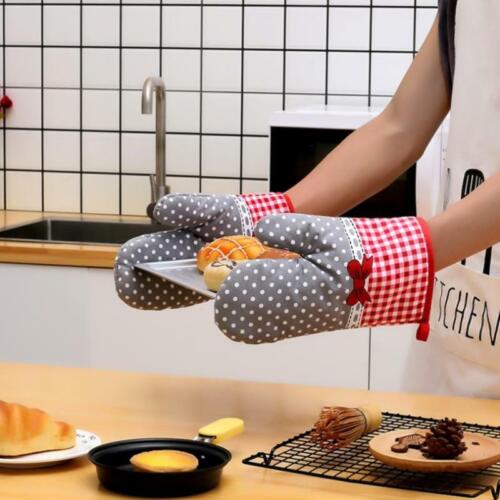Oven Mitts: How to clean them?
When it comes to cooking, there are a number of tools that are essential in order to make sure that everything goes smoothly. One of these tools is the oven mitt. They are designed to protect your hands from burns and scalds when handling hot dishes, trays and pots. They are a simple and effective way of preventing injury in the kitchen, but they can also become dirty, damaged, or ineffective with frequent use.
If you are looking to keep your oven mitts in top condition, it is important to understand how to clean and maintain them properly. In this article, we will be discussing different methods and techniques for cleaning your oven mitts, as well as tips for preventing damage and prolonging their lifespan.
One of the key things to keep in mind when it comes to oven mitts is that they come in a range of different materials, each of which requires slightly different care. For example, cotton oven mitts can usually be hand washed with a mild detergent, while silicone oven mitts are often dishwasher safe.

If you are unsure what type of material your oven mitts are made from, check the label or packaging for guidance. This will help you to avoid inadvertently damaging your mitts by using the wrong cleaning method.
There are a number of different cleaning techniques that can be used, depending on the material and level of dirt or grime that needs to be removed. Some of the most popular options include:
- Hand washing: One of the simplest and most effective ways to clean cotton oven mitts is to hand wash them using a mild detergent. To do this, simply fill a sink or basin with warm water and a small amount of detergent, then gently scrub the mitts using your hands or a soft-bristled brush. Rinse thoroughly and hang the mitts up to dry.
- Machine washing: Some types of them, such as those made from silicone or neoprene, can be washed in the washing machine. Check the label or packaging for specific instructions, as some mitts may need to be washed on a gentle cycle or placed in a laundry bag.
- Wiping clean: If you are dealing with a small stain or spill on your oven mitts, you may be able to simply wipe them clean using a damp cloth or sponge. This is a quick and easy way to deal with minor messes without having to fully wash or soak the mitts.
- Soaking: For heavily soiled oven mitts, soaking them in a solution of warm water and detergent can be an effective way to loosen and remove dirt and grime. Fill a sink or basin with warm water and a small amount of detergent, then place the mitts in the solution and let them soak for several hours or overnight. Rinse thoroughly and hang the mitts up to dry.
Once you have cleaned your oven mitts, it is important to take steps to prevent damage and maintain their effectiveness. Some tips to keep in mind include:
- Rotating your mitts: To avoid overuse and prevent damage, it is a good idea to rotate your oven mitts regularly. This means using a few different pairs in rotation, rather than relying on just one pair.
- Storing your mitts properly: When not in use, it is important to store your oven mitts in a cool, dry place where they will not be exposed to direct sunlight or heat. Avoid folding or crumpling them, as this can cause creases and damage over time.
- Checking for wear and tear: Over time, they may start to show signs of wear and tear, such as holes, tears or burns. It is important to check your mitts regularly for signs of damage, and replace them promptly if necessary.
- Using mitts properly: When using oven mitts, it is important to use them properly to avoid accidents and injuries. This means making sure that they are securely in place and covering your hands fully, and avoiding touching hot surfaces or sharp edges.
In conclusion, oven mitts are an important tool in any kitchen, but they require regular cleaning and maintenance in order to remain effective and safe to use. By following the tips and techniques outlined in this article, you can keep your oven mitts in top condition and avoid accidents and injuries while cooking.